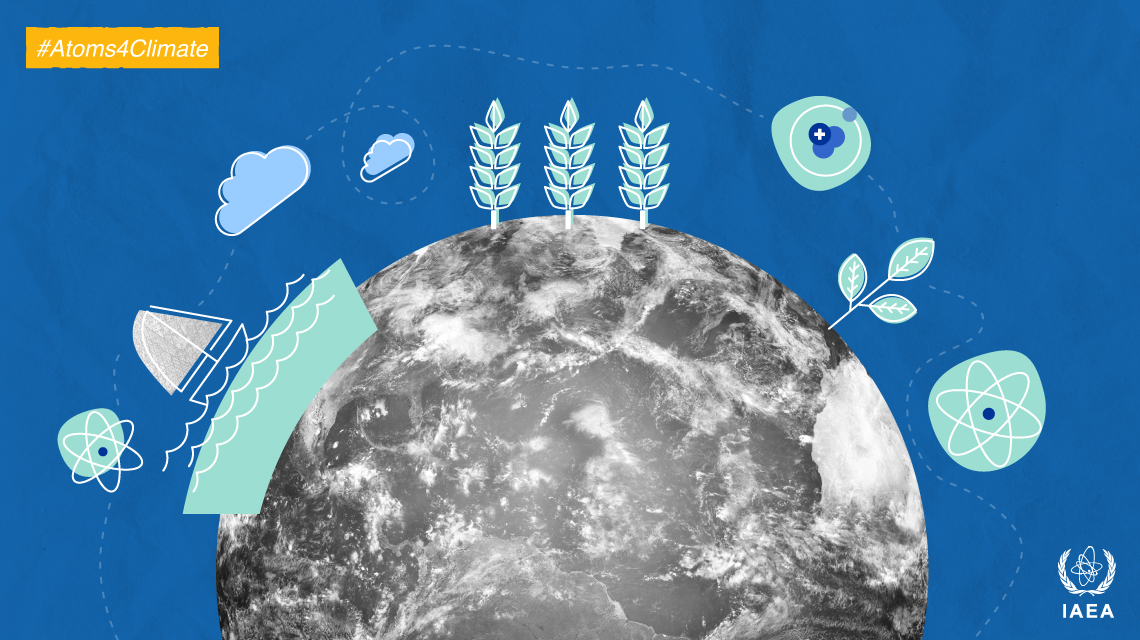Nuclear Techniques: A New Frontier in Understanding Climate Change
Nuclear and isotopic techniques are emerging as powerful tools to deepen our understanding of the environment and address the pressing issue of climate change. By leveraging these advanced methods, scientists can gather crucial data that informs science-based policy-making, thereby fostering more effective strategies to mitigate and adapt to climate change impacts. This article delves into how these techniques are used to study both land and water systems, monitor greenhouse gas emissions, and develop adaptive measures for food and water security.
Monitoring Greenhouse Gas Emissions
One of the most significant contributions of nuclear techniques is their ability to monitor greenhouse gas emissions such as carbon dioxide (CO2), nitrous oxide (N2O), and methane (CH4). These gases are the primary drivers of global warming, and understanding their sources and behaviors is critical for developing effective mitigation strategies.
Isotopic techniques are particularly valuable in this context. By analyzing the isotopic composition of greenhouse gases, scientists can trace their origins and understand how they interact with various environmental systems. For instance, isotopic signatures can differentiate between CO2 produced by fossil fuel combustion and that generated by natural processes like respiration and decomposition.
Understanding Environmental Changes
Nuclear techniques also play a crucial role in studying environmental changes in oceans, mountains, and their ecosystems. These methods enable scientists to gather precise data on various parameters, such as water temperature, salinity, and nutrient levels, which are essential for understanding how climate change affects marine and terrestrial ecosystems.
For example, by using isotopic tracers, researchers can study ocean circulation patterns and how they influence global climate systems. These insights are vital for predicting future climate scenarios and developing adaptation strategies for vulnerable regions.
Adapting to Food and Water Shortages
Climate change poses significant challenges to food and water security, particularly in regions prone to extreme weather events. Nuclear techniques offer innovative solutions for addressing these challenges. For instance, soil moisture and nutrient levels can be monitored using isotopic methods to optimize agricultural practices and enhance crop yields.
Similarly, nuclear techniques can be used to study water resources and develop sustainable management practices. By analyzing the isotopic composition of water samples, scientists can trace the sources of water, understand its movement through the hydrological cycle, and identify potential contamination sources. This information is crucial for developing strategies to ensure a reliable supply of clean water, even in the face of climate change.
Global Recognition and Adoption
Countries worldwide are increasingly recognizing the value of nuclear techniques in combating the challenges posed by climate change. According to Najat Mokhtar, IAEA Deputy Director General and Head of the Department of Nuclear Sciences and Applications, nations are discovering firsthand the benefits of these technologies promoted by the International Atomic Energy Agency (IAEA).
The IAEA plays a pivotal role in promoting the use of nuclear techniques for environmental research and policy-making. Through various programs and initiatives, the agency provides technical support, capacity-building, and knowledge-sharing to help countries harness the potential of these advanced methods.
How Isotopic Data is Collected and Utilized
Data collection using isotopic techniques involves several sophisticated processes. For greenhouse gas monitoring, air samples are collected from different locations and analyzed in laboratories equipped with specialized instruments. These instruments measure the isotopic composition of the gases, providing insights into their sources and dynamics.
In environmental studies, water and soil samples are collected and analyzed to understand various parameters like nutrient levels, contamination sources, and hydrological processes. This data is then used to develop models and simulations that predict future scenarios and inform policy-making.
Case Studies and Success Stories
Several case studies highlight the successful application of nuclear techniques in addressing climate change challenges. For instance, in some coastal regions, isotopic analysis has been used to study the impact of rising sea levels and ocean acidification on marine ecosystems. These studies have provided valuable data that has informed conservation strategies and policy decisions.
In agriculture, isotopic techniques have been employed to optimize fertilizer use and improve crop resilience to changing weather patterns. By understanding how plants uptake nutrients and water, farmers can adopt more sustainable practices that enhance food security while minimizing environmental impact.
The Future of Nuclear Techniques in Climate Research
The potential of nuclear techniques in climate research is immense. As technology advances, these methods are becoming more sophisticated and accessible, enabling scientists to gather more accurate and comprehensive data. This, in turn, will lead to better-informed policies and more effective climate action.
Moreover, international collaboration and knowledge-sharing will play a crucial role in maximizing the benefits of nuclear techniques. By working together, countries can pool resources, share expertise, and develop innovative solutions to the global challenge of climate change.
Conclusion
Nuclear and isotopic techniques represent a promising frontier in the fight against climate change. By providing precise and comprehensive data, these methods enable scientists and policymakers to develop science-based strategies for mitigating and adapting to environmental changes. As countries continue to recognize the value of these techniques, their adoption and application will likely grow, leading to more effective and sustainable solutions for a changing world.
For more information on the role of nuclear techniques in climate research, you can refer to the International Atomic Energy Agency (IAEA) website.
For more Information, Refer to this article.


















![Samsung Home Appliances: Rigorous Testing for Optimal Performance [Video] Engineered to Perfection: Inside the Intense Testing Regimen of Samsung Home Appliances](https://www.hawkdive.com/media/samsung-digital-appliances-testing-regimen-product-quality-reliability-durability_thumbnail728-218x150.jpg)














